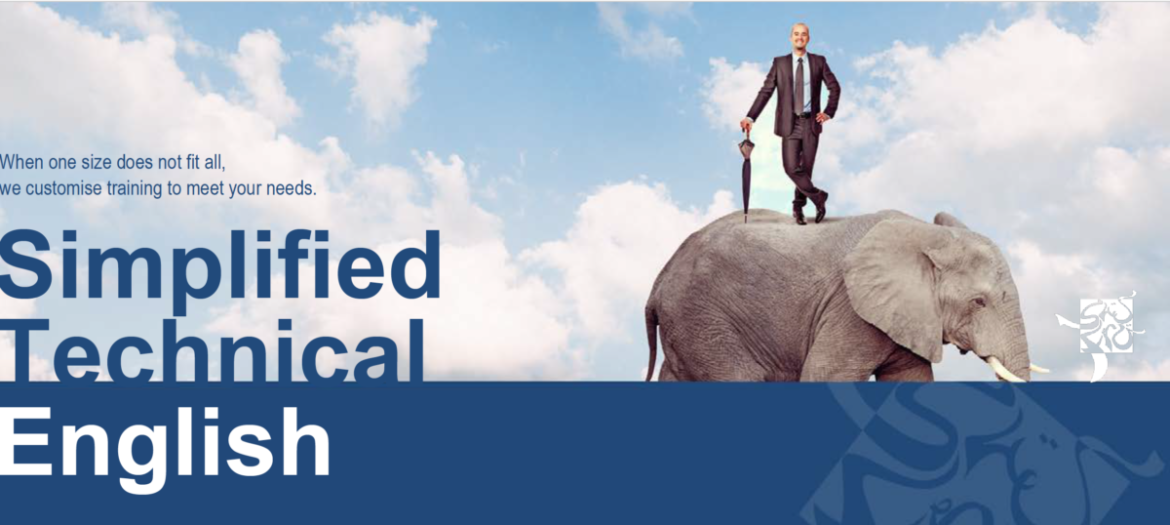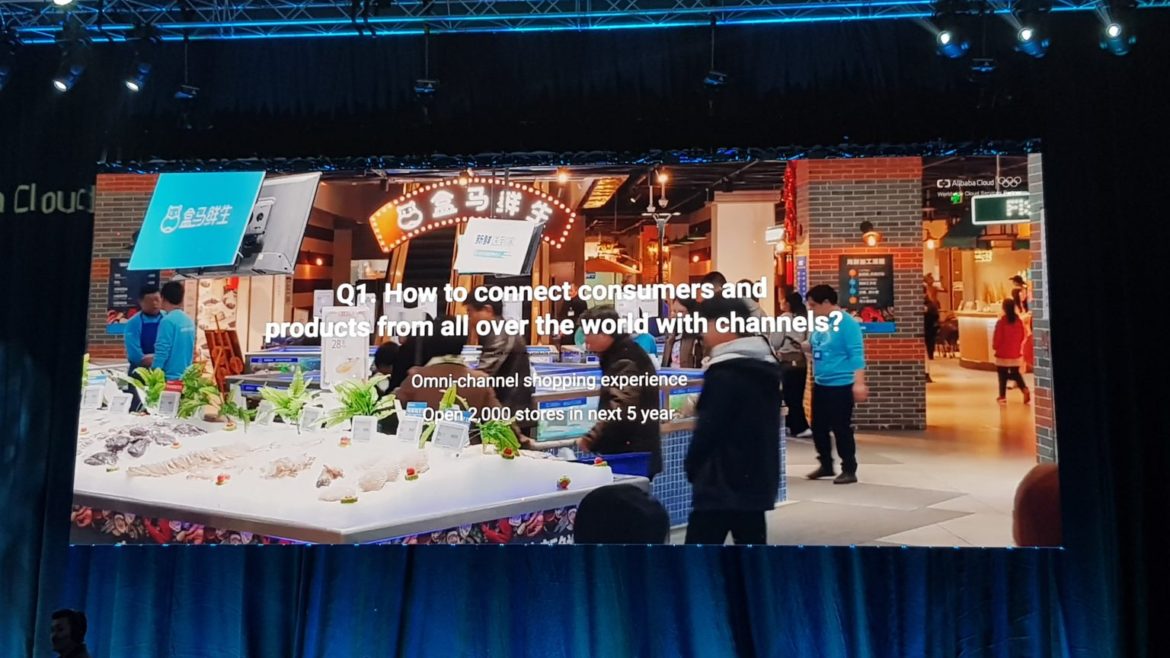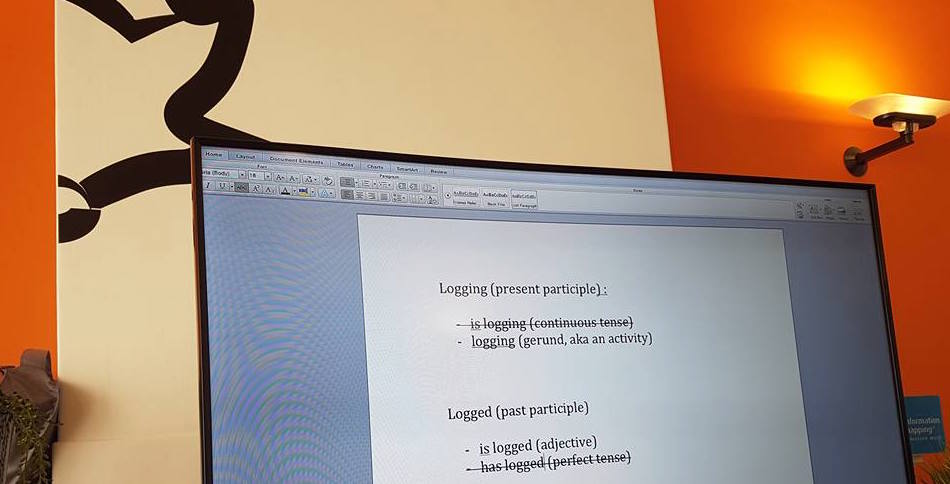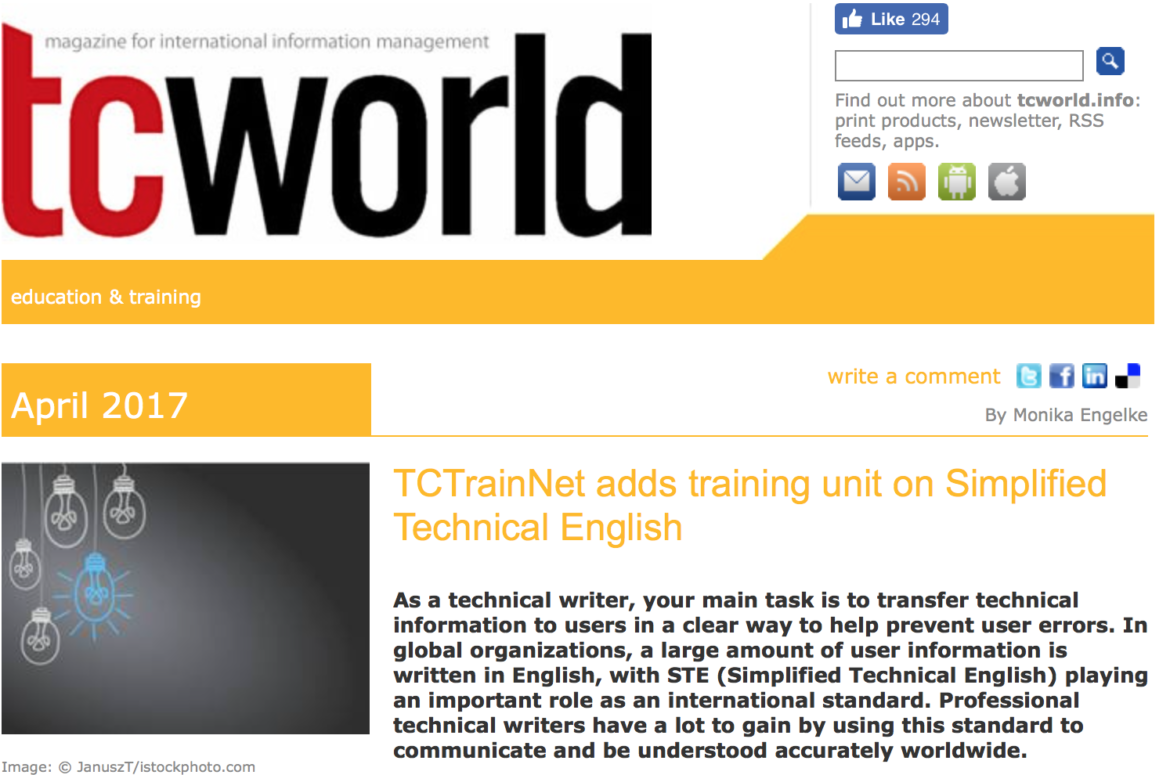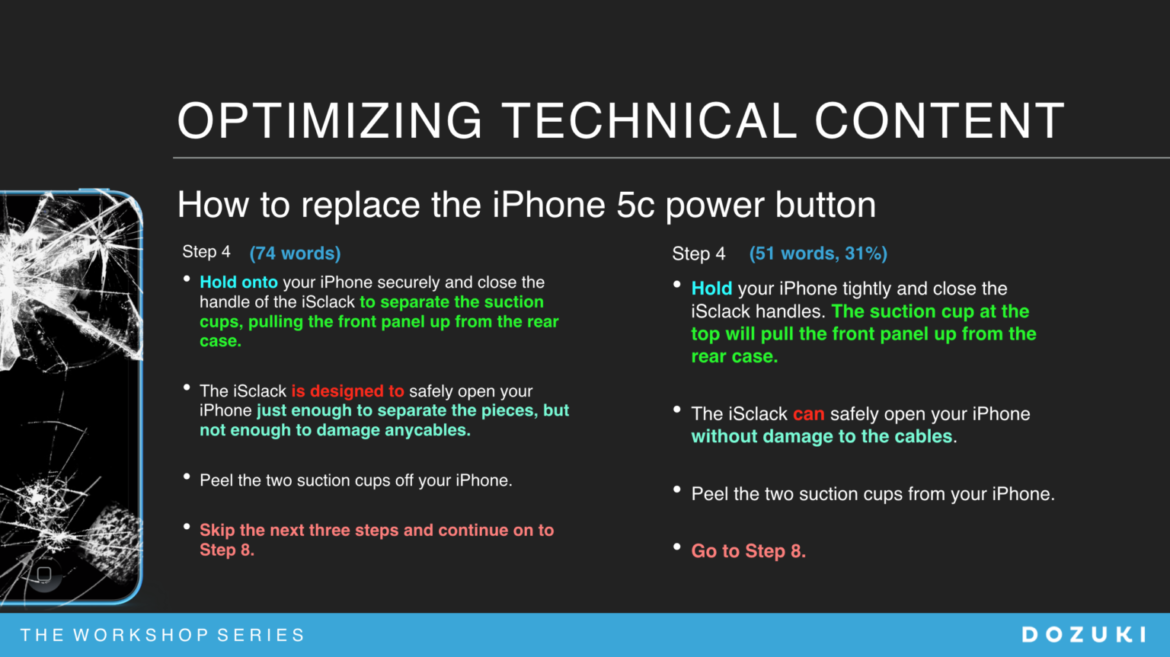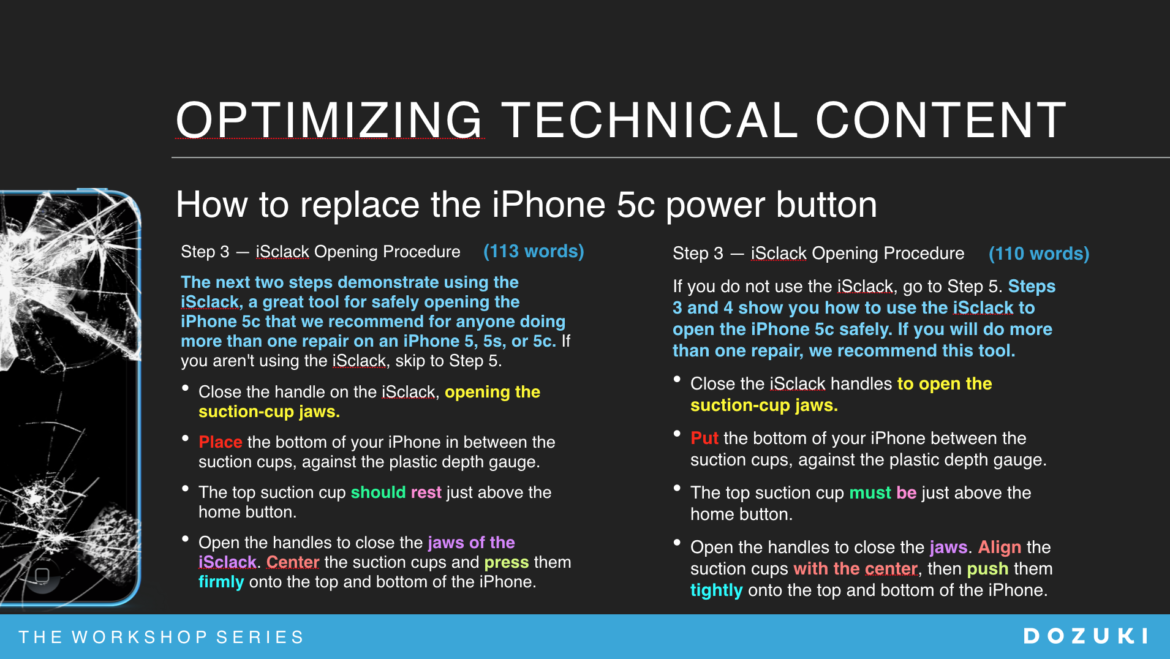Write effective user manuals & instructions with Simplified Technical English
Europe Online STE Workshop
Dates: 16 & 17 January 2020
Plan later:
- 30 & 31 January 2020
- 11 & 12 February 2020.
Time: 09:00 to 17:00 Central European Time [Europe]
Length of training: 2 days
Course fee: 450 EUR**
Course registration ends one week before training commences.
**Course fee includes exercises, learning aids, certificate of completion, and 90-day post-training support.
Summary of Simplified Technical English (STE)
Simplified Technical English (STE) or ASD-STE100 is a controlled language that is used to write technical manuals in such a way that they can be more easily understood by an international audience. STE helps to make translations cheaper and more accurate. Often a formal requirement for aircraft and defence maintenance documentation, STE can easily be adapted to all technical industries and beyond. Ms. Shumin Chen will teach participants how to correctly and effectively use STE in practice. She will also address some of the mistakes commonly found in technical writing and the frequently incorrect use of common STE writing rules.
Shumin gave us a an all-rounded presentation to Simplified Technical English. Personally, rule 1.3: To use only approved words with their approved meaning holds the key to successful controlled language implementation. Rules 3.4, 3.6, 4.1, 5.3, and 5.5 are also among my favourites. The approved verb TO MAKE SURE THAT can come in very handy for technical writers as well. The presentation of STE rules offers quite a detailed overview that includes not only language rules but good, old technical authoring principles in general. It has been very helpful for us to learn and understand the concept of STE. I have found Shumin to be very competent in STE and will definitely recommend her course! Eric, Head of Corporate Technical Documentation (CTD), Schindler Group.
STE Course Outline*
This 2-day Europe Online STE Workshop includes interactive training and exercises.
- Day 1: Classroom Training
- Practical overview of Simplified Technical English
- How STE helps both native & non-native speakers of English
- Benefits of adopting the STE international writing standard
- Writing rules and how to apply them in practice
- How to use the general vocabulary.
- Approved and non-approved words discussion and the rationale behind.
- Day 2: Application, Review, & Exercises
- How to deal with industry-specific terminology
- How to use STE for various documentation types
- How to implement STE with minimal disruption to on-going production and existing documentation
- Practical workshop session for applying STE rules to your own documents
- Review, edit, and discuss participants’ own documents to reinforce learning
- Classroom presentation of own documents.
* Shufrans also offers customised ASD-STE100 training solutions tailored to meet your specific requirements. These courses are normally provided at the customer’s premises.
The presentation on rules clarified a lot of things of which I was unaware. I have a much better understanding of how to format lists with colons, when to use obey vs. comply, and the differences between notes, cautions, and warnings. Moving forward, I will be able to utilize the ASD-STE rules more effectively to write better documents. Lauren Gelli, Senior Technical Writer, Aerotech Inc.
Who should attend this technical writing workshop?
- Compliance managers
- CIO, COO, CTO
- Customer support managers
- Documentation managers
- Editors
- Engineering managers
- Engineers and SMEs who create documentation
- Graphics specialists
- ILS managers
- Maintenance managers
- Operation managers
- Product managers
- Project managers
- Quality managers
- Software research engineers
- Technical illustrators
- Technical writers
- Translation managers
- Translators.
What technical writing outcomes to expect?
Our interactive training, exercises and workshop, will teach participants to standardise content to:
- Author more efficiently
- Communicate more effectively with a global audience
- Improve operational safety
- Reduce AOG / downtime
- Facilitate modular writing and reuse
- Facilitate teamwork
- Facilitate translation
- Maximise consistency
- Optimise product lifecycle support
- Reduce the cost of creating and maintaining technical publications.
ASD-STE100 Trainer’s qualifications
Ms. Shumin Chen, principal trainer & consultant at Shufrans TechDocs received her professional on-the-job training in the field of STE under the tutelage of Dr Frans Wijma, a linguist and documentation expert. Together as an experienced global team, they provided their combined knowledge and dedication to benefit customers worldwide. To date, they have provided training and consultancy services to over 200 companies. Shufrans TechDocs is the only company with such vast experience in providing certified STE training.
Shumin has supported various companies with their STE and other documentation needs, based on standards where possible. Although STE was developed for the aerospace industry, more specifically for aircraft maintenance documentation, she found that it made a lot of sense to apply the same principles to other industries and types of documents as well. Few -if any- changes to the specification are necessary to adapt STE to industrial sectors ranging from machinery to IT, automotive to medical equipment.


